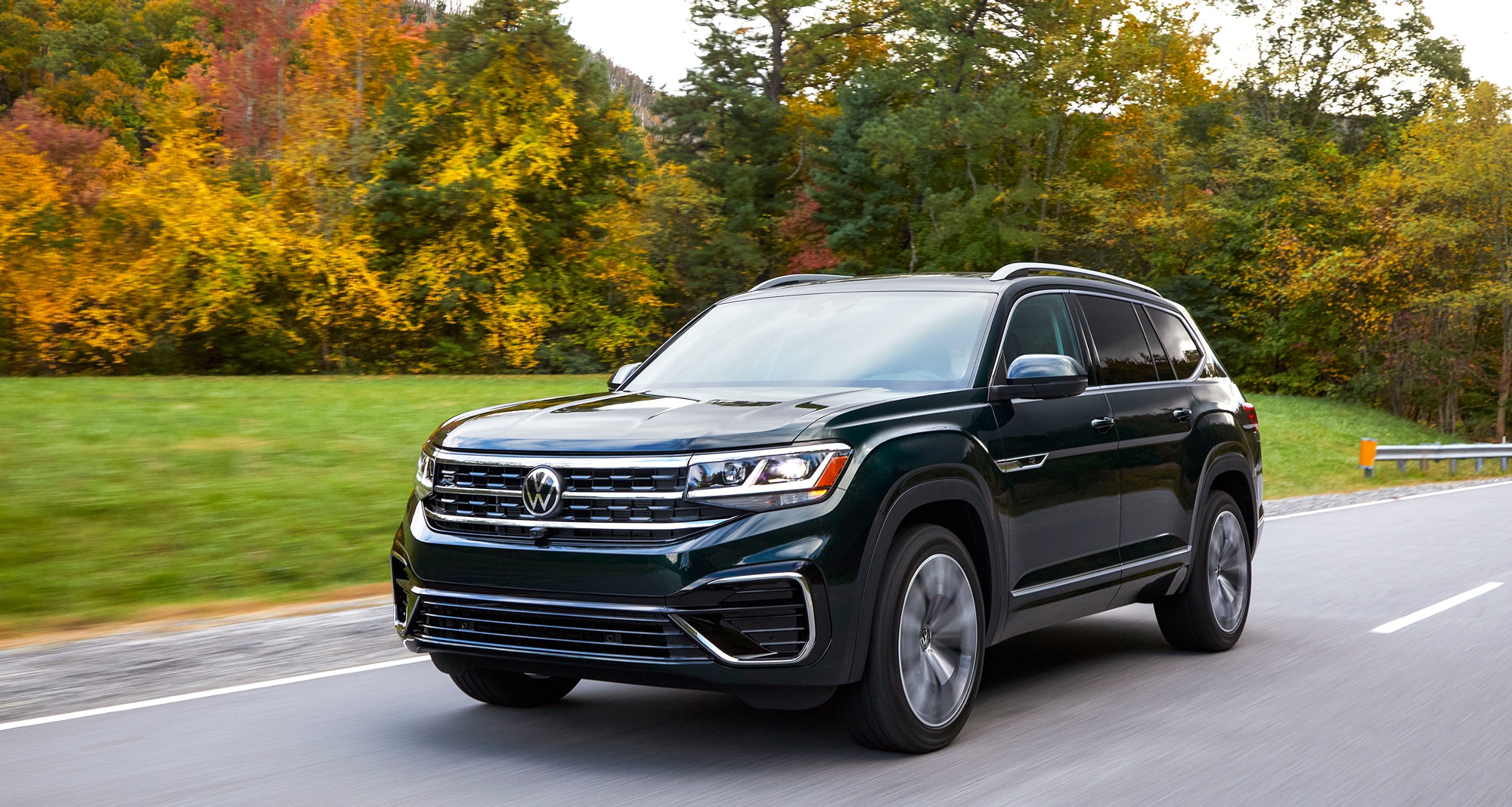What is a Mid-Size SUV?
A highly competitive segment, the mid-size SUV class offers seemingly endless options to appease even the most persnickety consumers.
 Volkswagen
Volkswagen
Mid-size SUVs are some of the most popular family vehicles available, combining excellent passenger room with respectable cargo capacity and plenty of features to keep everyone safe and happy. Some lean to the luxury end of the spectrum, while others tempt buyers with off-roading gear or high-power engines. Every model offers weather-conquering all-wheel drive, if it isn’t already standard, and several can seat more than five people.
Which Brands Sell Mid-Size SUVs?
Almost every brand includes at least one mid-size SUV in its showroom, giving consumers significant variety. From tall wagons like the Subaru Outback to adventure-focused, truck-based SUVs like the Toyota 4Runner, Jeep Wrangler, and Ford Bronco to three-row models like the Kia Telluride and Honda Pilot. In between there are numerous variations on the mid-size sport-utility formula. Jeep now sells two- and three-row versions of its Grand Cherokee, which can be equipped for off-roading just as easily as commuting. Toyota offers its three-row both as a gas-only Highlander and Highlander Hybrid, while Dodge goes big on power with a V8 engine in several Durango models. Other popular choices in this segment include the Volkswagen Atlas, Chevrolet Traverse, Nissan Pathfinder, Ford Edge and Ford Explorer. The Blue Oval provides an EV option as well, with its Ford Mustang Mach-E.
How Much Does a Mid-Size SUV Cost?
As you might imagine in a class with this many options, pricing varies quite a bit. The Subaru Outback starts at just over $28,000, but you’ll find many more models (e.g., the Kia Sorento, Toyota Venza, and Nissan Murano) in the $30,000 to $35,000 range. The Jeep Grand Cherokee, Honda Pilot, and Dodge Durango slide in under $40,000.
In general, the most expensive models in a lineup—such as the all-wheel-drive, luxury-focused Chevrolet Traverse High Country and Volkswagen Atlas SEL Premium R-Line—come in at around $55,000. There are, of course, exceptions: The highest-performing Dodge Durango approaches $70,000, and the top-trim Jeep Wrangler Rubicon 392 checks in at over $78,000.
How Big is a Mid-Size SUV?
“Mid-Size” covers a lot of ground. Some models, like the VW Atlas and long-wheelbase Jeep Grand Cherokee L, extend beyond 200 inches in length, whereas the Toyota Venza spans just 186.6 inches from nose to tail. The two-door Jeep Wrangler and Ford Bronco are even smaller, at 166.8 and 173.7 inches long, respectively.
That said, most SUVs in this class provide ample room in the back for adults and child seats as well as a decent amount of cargo space. Setting aside the two-door Wrangler and Bronco (which are outliers, with 13 and 22 cu.-ft. of storage space), cargo volume behind the second row spans from as low as 29 cu.-ft. in the Toyota Venza to as high as 58 cu.-ft. in the Chevy Traverse.
What Kind of Fuel Economy Does a Mid-Size Car Get?
As in every segment, models with a hybrid or EV powertrain lead the way when it comes to efficiency. The Mustang Mach-E, which doesn't use gasoline, achieves up to 103 MPGe combined in rear-drive form and, in California Route 1 trim, can travel up to 314 miles on a single charge. Among three-row SUVs, the Kia Sorento offers impressive fuel economy, seeing up to 37 mpg with the hybrid powertrain and 79 MPGe (or 34 mpg with a depleted battery) with the plug-in hybrid version.
Not all hybrids are quite as thrifty, though. The battery-assisted Ford Explorer checks in with 27 mpg combined, but at least that tops the fuel economy of the gas-only versions, which achieve 24 mpg at best. Most other non-hybrid mid-size SUVs fall anywhere from the low 20s to low 30s, but performance-oriented models like the V8 powered Jeep Wrangler and Dodge Durangos dip down into the mid-teens.
Written by humans.
Edited by humans.
 Benjamin Hunting
Benjamin HuntingNearly two decades into his career as an automotive journalist, Benjamin has had his hands greasy, his hair blown back, and his heart broken by more than one project car. In addition to his work at Capital One, he has contributed features and reviews to Motor Trend, Car and Driver, Hagerty, Driving Line, Inside Hook, Super Street, European Car, Roadkill Magazine, Motor 1, The Drive, the Toronto Star, the National Post, Business Insider, NAPA, Autoblog, Automotive News Canada, and AutoGuide. He is also cohost of the Unnamed Automotive Podcast and cocreator of the Code 45 and Dead Air graphic novels. In his spare time, he's a friend to vinyl and enjoys keeping the shiny side up during track days.
Related articles
View more related articles